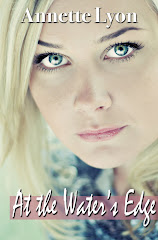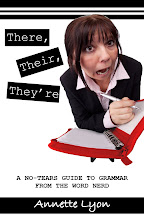- Carve out a large chunk of time. Three days plus two hours on Friday was cutting it close. If we could have started even a couple of extra hours earlier (have an entire half day Friday), we wouldn't have been squeezed for time at the end.
- Meals and snacks. It was amazing how much more we could get done when food was at our fingertips. Blood sugar drops, and sometimes all we needed just a bowl of grapes or a cookie to keep going.
- Schedule a few breaks. Time them so you can get back to work, and decide in advance what you'll do during them. For example, one break on Saturday consisted of the family playing Dance, Dance Revolution together, which got our blood pumping, took our minds off tiny text, and was additional bonding time. Sunday we took a break to eat dinner (pizza baked in the oven). We ate that meal together and talked about our reading.
- To help keep your mind from wandering, consider listening to the Book of Mormon while you read. This does take longer, because most people can read quite a bit faster than a book is read aloud, but it's a great way to keep your mind connected to what you're reading for hours and hours.
- An additional benefit to listening and reading: Two family members said that this method helped them retain more as well. Hearing and reading simultaneously cemented the passages in their mind better than either alone.
- Note that you can speed up the MP3 recording. At one point, we had some family members listening to it at nearly 2X speed. That sounds fast at first, but you get used to it. It's still quite a bit slower than you can read silently but speeding it up makes for a quicker read than the regular voice, and it's still understandable.
- To make the event feel more like a family activity, do what we did: read 1 Nephi 1 and Moroni 10 aloud together, making sure every single person gets a chance to read a few verses. That let us officially start and end the Book of Mormon as a family.
Monday, March 29, 2010
Book of Mormon Marathon
Monday, March 1, 2010
The Real Message of Easter
I stood inside a huge cathedral in
Before me was what looked like a small, elaborate building, covered with gilded decorations. A low arch marked the opening, where a line of people waited for their turn to go inside and see the stone slab where so many believed the body of Jesus Christ had been placed after His death. A somber priest with a tall, black hat and robe and black beard to match, manned the traffic going into the shrine.
When my turn came, I quietly ducked under the low entryway and stepped inside the tiny room. In front of me, an elderly woman, fingers gnarled with age, knelt beside the stone slab. She wept as she prayed to the hunk of limestone, above which were hung icons representing Christ. She kissed her fingers and touched the tips to the tomb.
And I stood there, feeling . . . nothing.
I could not fault the woman for her genuine devotion, but I couldn’t feel the same thing. The light, the peace and warmth, I knew from the Spirit and from my experiences in the temple weren’t here. Instead, the tight space felt almost claustrophobic.
I left the small enclosure feeling heavy and dark, wanting to warm up in the bright summer sun waiting outside the doors.
It wasn’t until my visit a few days later to a different place dubbed “The Garden Tomb,” that I realized why I had felt so heavy and empty before. We walked along the meandering path that led to the tomb. Sunlight filtered through tree branches, casting dancing shadows across the beautifully landscaped grounds.
When we reached the carved-out cave, we were allowed to step inside. It had similar slabs for the dead as the other, gaudy, tomb had. This time, no one knelt or kissed the stone.
As before, I didn’t feel an overwhelming sense of peace or confirmation that this was, in fact, the correct burial place of the Redeemer.
After everyone had taken their turn inside, we gathered in a semicircle nearby, and our tour guide pointed to a sign hanging on the door of the Garden Tomb: “He is not here: for he is risen” (Matthew 28:6)
And suddenly, I understood.
The strange sensation of heaviness had come before because the woman was praying to a place where her god didn't belong. He wasn't there.
Whether either of the tombs I visited is the “real” one doesn’t matter. The entire point of Christ’s life, death, and the Resurrection is that wherever His original tomb resides, it’s empty now.
This is the glorious message of Easter, of the Resurrection. This is the joy and the triumph.
He is not here: for He is risen.








